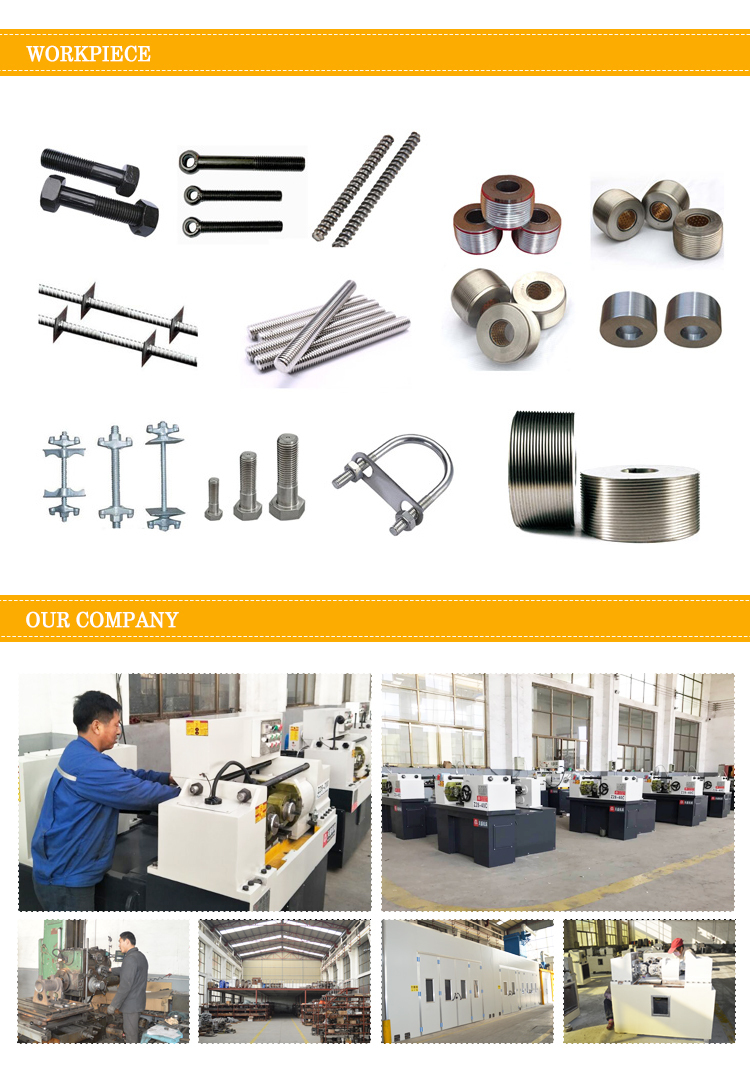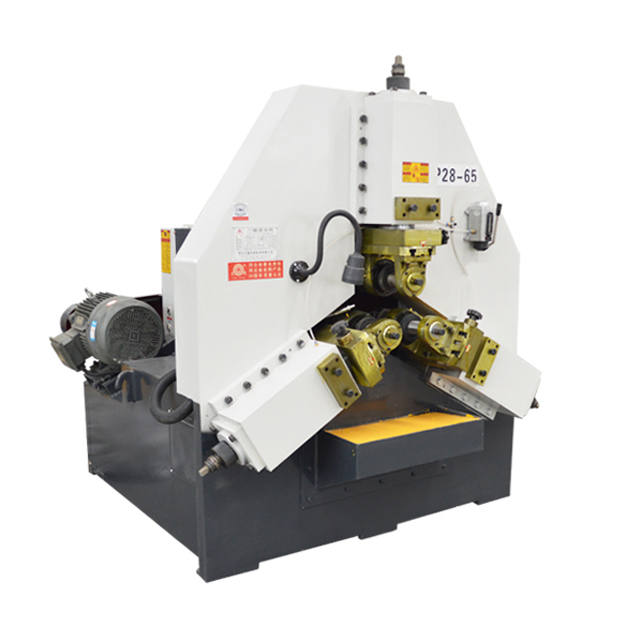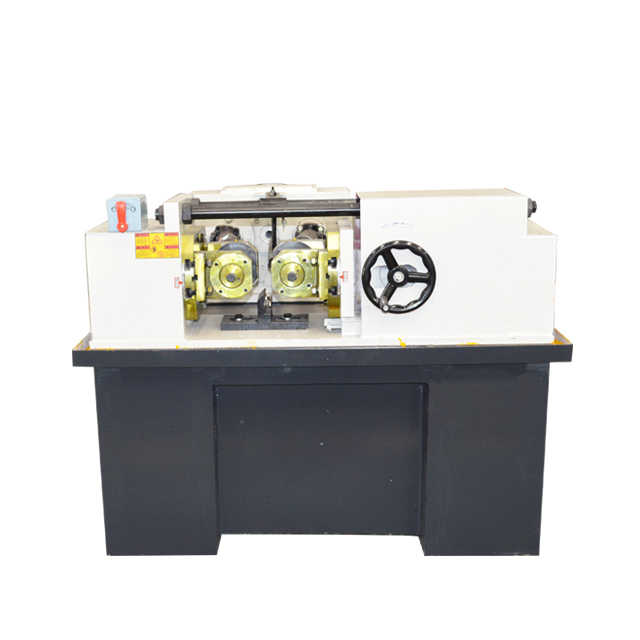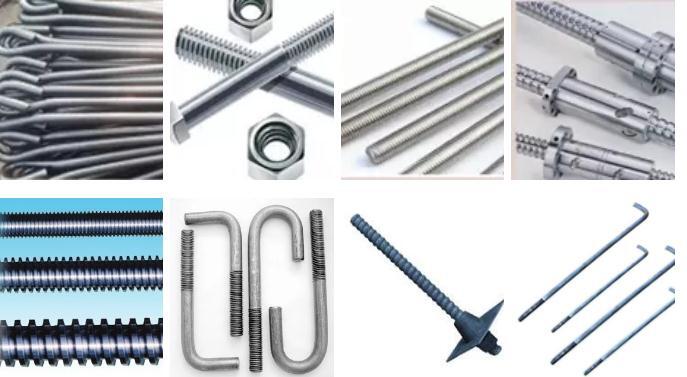huide
what is flat die thread rolling machine
before main focus on China market, have good reputation in domestic market. Now Made in China Machine represent higher performance, HUIDE( Fengsheng )®️ open the oversea market, at present HUIDE( Fengsheng )®️ already export the machine more than 60 countries in the world.such as,Georgia,Guam,Panama,Namibia,Solomon Islands,Martinique,Ecuador,Norfolk Island,America,Europe,Africa,Oceania‘’etc.
| Product name | what is flat die thread rolling machine |
| Keyword | thread rolling machine manufacturer in ludhiana,high precision cnc thread rolling machine,advance thread rolling machine supplier,thread rolling machine types,rebar screw thread rolling machine,thread rolling machine specification,flat die thread rolling machine price,thread rolling machine for steel bar |
| Place of Origin | China |
| Production Capacity | 234~400/Per Min |
| Power | 2.2~6kw |
| Thread Dia(mm) | 2.0~4.0 |
| Core Components | Motor |
| Thread Length(mm) | 7~50 |
| Condition | New |
| Pre-Sales Service | Inquiry and consulting support. View our Factory. |
| Feature | pipe nipple threading machine in its rolling pressure range of cold, the workpiece for thread, ruled, twill and other treatment; straight, helical and oblique spline gear rolling; straightening, reducing diameter, rolling and various forming rolling. |
| Dimensions | 1942mm*1873mm*1532mm, (Contact us for specific information to confirm) |
| Applicable Industries | Energy &Mining, etc. |
| Advantages | what is flat die thread rolling machine--It can be used to process scerw and rebar.The rebar processed by the machine has the good overall mechanical.It can make the tensile strength increased by 20%-30%,the fatigue strength increased by 40%-60%,corrosion resistance increased by 50%-200%.Mechanical properties of rebar connector reached and more than international standards. |
| Weight | 2479kg |
| Product Description | The machine has a safe and reliable electro-hydraulic execution and control system. Each work cycle can be selected in manual, semi-automatic and automatic ways. |
| terms of packing | enerally, we pack our goods in plywood cases. |
| terms of paymen | T/T 30% as deposit, and 70% balance against BL copy |
| Life span | 16 years (Contact us for specific information to confirm) |
| After-sale service | 12 months warrantly, man-made destory will be exception. |
| what is flat die thread rolling machine Advantage | We keep good quality and competitive price to ensure our customers benefit |
| Packing | 2288x2493x2391mm(Contact us for specific information to confirm) |
| OEM/ODM | Customization Service Provided |
| Sales country | All over the world for example:Georgia,Guam,Panama,Namibia,Solomon Islands,Martinique,Ecuador,Norfolk Island |
| MOQ | 6pcs(Contact us for specific information to confirm) |
| Delivery time | 15-20 days for OEM, 5-7days for ready goods. |







what is flat die thread rolling machine
huide-machinery.as one of the most professional what is flat die thread rolling machine manufacturer has the advantages at:
We are the leader thread rolling machine supplier in China, also we have customers worldwide, such as America, Argentina, Brazil, Belarus, Bangladesh, Georgia,Guam,Panama,Namibia,Solomon Islands,Martinique,Ecuador,Norfolk Island, and Italy.We are factory specializing in the manufacture and export of thread rolling machine for more than 20 years, all of the production we sale are at a very best price and high quality.
We take care of our product quality, any defect of the goods, we will take responsibility. You are risk-free.And we believe that the good quality products will can give us survival, so, we always offer the top quality products to our customers, to keep them have the competitiveness in there market.
what is flat die thread rolling machine services FAQs Guide
Are you looking for a quick review guide about what is flat die thread rolling machineservices?
An ultimate FAQ buying guide is available to help you.This guide contains all the information about all the important facts, figures, and various processes regarding what is flat die thread rolling machine services.
Let’s continue!
2.How does the thread rolling process compare to other methods such as chasing or grinding?
3.What are Some Common Applications of Threads Created by a what is flat die thread rolling machine?
4.How Does the Thread Rolling Process Work?
5.What is the Typical Lifespan of a what is flat die thread rolling machine?
6.What is a what is flat die thread rolling machine and how does it work?
7.What are the main features of a high-quality what is flat die thread rolling machine?
8.What is the maximum thread size that can be rolled with this machine?
9.What is the Difference Between Annular and Circular Thread Rolling?
10.What are the Advantages of Using a what is flat die thread rolling machine in Production?
11.Are There Different Types of Thread Rolling Dies?
12.Can a what is flat die thread rolling machine create threads on hardened materials?
13.What are the Limitations of a what is flat die thread rolling machine?
1.What Quality Control Measures are Used in what is flat die thread rolling machine Production?
1. Material Inspection: The first step in quality control is to inspect the raw materials used in the production of thread rolling machines. This includes checking the quality and specifications of the steel, bearings, gears, and other components.
2. Machine Calibration: Before starting the production process, the thread rolling machine is calibrated to ensure that it is functioning properly and producing accurate threads.
3. In-process Inspection: During the production process, regular inspections are carried out to check the dimensions, surface finish, and other critical parameters of the thread rolling machine.
4. Statistical Process Control (SPC): SPC is a method used to monitor and control the production process by collecting and analyzing data. This helps to identify any variations or defects in the production process and take corrective actions.
5. Final Inspection: Once the thread rolling machine is completed, a final inspection is carried out to ensure that it meets all the required specifications and standards.
6. Performance Testing: The thread rolling machine is tested for its performance by running it with different types of materials and thread sizes to ensure that it can produce accurate and consistent threads.
7. Quality Management System: Most manufacturers have a quality management system in place to ensure that all the processes and procedures are followed correctly and any issues are addressed promptly.
2.How does the thread rolling process compare to other methods such as chasing or grinding?
We should have a stable supply chain and logistics capabilities, and provide customers with high -quality, low -priced what is flat die thread rolling machine products.
Thread rolling is a cold forming process that uses hardened steel dies to deform the surface of a cylindrical blank, creating the desired thread profile. This process is typically used for high volume production of precision threads and offers several advantages over other methods such as chasing or grinding.
1. Faster Production Speed: Thread rolling is a high-speed process that can produce threads at a rate of up to 1000 parts per minute. This is significantly faster than chasing or grinding, which are typically slower processes.
2. Improved Thread Strength: The cold forming process of thread rolling results in a work-hardened surface that is stronger and more durable than threads produced by chasing or grinding. This makes thread rolling ideal for applications that require high strength and reliability.
3. Better Surface Finish: Thread rolling produces a smooth and precise thread surface, which is important for applications that require a tight fit or smooth movement. Chasing and grinding can result in rougher surfaces that may require additional finishing processes.
4. Cost-Effective: Thread rolling is a cost-effective process, especially for high volume production. The use of hardened steel dies also makes it a more durable and long-lasting method compared to chasing or grinding, which may require frequent replacement of tools.
5. Versatility: Thread rolling can be used to produce a wide range of thread sizes and profiles, making it a versatile process for various applications. It can also be used on a variety of materials, including steel, aluminum, and plastic.
In comparison, chasing and grinding are more suitable for smaller production runs or for repairing damaged threads. They also require more skilled labor and may result in higher costs for tooling and setup. However, they may be more suitable for producing specialized or non-standard thread profiles.
Overall, thread rolling offers a faster, more cost-effective, and versatile method for producing high-quality threads, making it a preferred choice for many industrial applications.
3.What are Some Common Applications of Threads Created by a what is flat die thread rolling machine?
As one of the top what is flat die thread rolling machine manufacturers in China, we take this very seriously.
1. Fasteners: Thread rolling machines are commonly used to create threads on bolts, screws, and other fasteners. This allows for a stronger and more precise thread compared to traditional cutting methods.
2. Automotive Industry: Thread rolling machines are used to create threads on various automotive components such as engine parts, suspension components, and transmission parts.
3. Aerospace Industry: Threads created by thread rolling machines are used in the production of aircraft components such as landing gear, engine parts, and structural components.
4. Construction Industry: Threaded rods and bolts used in construction are often created using thread rolling machines. This ensures a strong and reliable connection between building materials.
5. Medical Industry: Threaded components are used in medical devices such as implants, surgical instruments, and prosthetics. Thread rolling machines are used to create precise and durable threads for these applications.
4.How Does the Thread Rolling Process Work?
We attach importance to the innovation ability and team spirit of employees, have advanced R & D facilities and laboratories, and have a good quality management system.
The thread rolling process is a cold forming process used to create external threads on a workpiece. It involves pressing a hardened steel die onto the surface of the workpiece, causing the material to flow and form the desired thread shape.
The process begins with a blank workpiece, typically a cylindrical rod or bar, which is fed into the thread rolling machine. The machine consists of two dies, an upper and a lower die, which are mounted on parallel spindles and rotate in opposite directions.
The upper die is stationary, while the lower die is adjustable and can be moved up and down to accommodate different thread sizes. The dies are also equipped with thread profiles that correspond to the desired thread shape.
As the workpiece is fed between the two dies, it is gripped and held in place by a set of rollers. The rollers apply pressure to the workpiece, forcing it to deform and flow into the thread profile of the dies.
The dies then rotate, causing the material to be displaced and formed into the desired thread shape. The pressure and rotation of the dies continue until the thread is fully formed.
Once the thread is formed, the dies retract, and the workpiece is released. The thread is then checked for accuracy using gauges and other measuring tools.
The thread rolling process is highly efficient and can produce threads at a much faster rate than traditional cutting methods. It also results in a stronger and more precise thread, making it a preferred method for creating high-quality threads in mass production.

5.What is the Typical Lifespan of a what is flat die thread rolling machine?
The typical lifespan of a thread rolling machine can vary depending on several factors such as usage, maintenance, and quality of the machine. However, on average, a thread rolling machine can last for 10-15 years with proper care and maintenance. Some high-quality machines can even last for 20-25 years. Regular maintenance and timely repairs can also extend the lifespan of a thread rolling machine.
6.What is a what is flat die thread rolling machine and how does it work?
We pay attention to the introduction and training of talents, scientifically regulate the management system, and focus on cultural construction and team cohesion.
A thread rolling machine is a type of machine used to create threads on a workpiece. It works by pressing a hardened steel die onto the surface of the workpiece, which then displaces the material to form the thread shape.
The machine consists of a fixed and a moving die, with the workpiece being placed between them. The dies have a thread profile that matches the desired thread shape. The workpiece is then rotated while the dies are pressed against it, causing the material to be displaced and form the thread.
The thread rolling process is a cold forming process, meaning that no heat is applied to the workpiece. This results in a stronger and more precise thread compared to other methods such as cutting or grinding.
Thread rolling machines are commonly used in the production of screws, bolts, and other threaded components. They can also be used for threading pipes and other cylindrical objects.
7.What are the main features of a high-quality what is flat die thread rolling machine?
We have a wide range of what is flat die thread rolling machine customer groups and establishes long -term cooperative relationships with partners. The countries we provide services include Georgia,Guam,Panama,Namibia,Solomon Islands,Martinique,Ecuador,Norfolk Island.
1. Robust Construction: A high-quality thread rolling machine should have a sturdy and durable construction to withstand the high pressure and stress of the rolling process.
2. Precision and Accuracy: The machine should be able to produce threads with high precision and accuracy, ensuring consistent and uniform thread quality.
3. High Production Capacity: A good thread rolling machine should have a high production capacity, allowing for efficient and fast production of threaded parts.
4. Easy to Operate: The machine should have a user-friendly interface and controls, making it easy for operators to set up and operate the machine.
5. Versatility: A high-quality thread rolling machine should be able to produce a wide range of thread sizes and types, making it suitable for various applications.
6. Low Maintenance: The machine should be designed for easy maintenance, with readily available spare parts and minimal downtime for repairs.
8.What is the maximum thread size that can be rolled with this machine?
As one of the top what is flat die thread rolling machine manufacturers in China, we take this very seriously.
The maximum thread size that can be rolled with this machine depends on the specific model and specifications of the machine. It is best to consult the manufacturer or the machine's manual for the exact maximum thread size.

9.What is the Difference Between Annular and Circular Thread Rolling?
We have been working hard to improve service quality and meet customer needs.
Annular and circular thread rolling are two methods used to create threads on cylindrical parts. The main difference between these two methods lies in the shape of the thread produced.
Annular thread rolling is a process in which a cylindrical part is rotated between two dies, one of which has a thread-shaped groove. As the part is rotated, the dies move together, pressing the thread-shaped groove into the surface of the part, creating a helical thread. This method produces threads with a triangular cross-section, with rounded peaks and valleys.
On the other hand, circular thread rolling is a process in which a cylindrical part is rotated between two dies, both of which have thread-shaped grooves. As the part is rotated, the dies move together, pressing the thread-shaped grooves into the surface of the part, creating a helical thread. This method produces threads with a circular cross-section, with sharp peaks and valleys.
In summary, the main difference between annular and circular thread rolling is the shape of the thread produced. Annular thread rolling produces triangular threads, while circular thread rolling produces circular threads. The choice between these two methods depends on the specific requirements of the application and the desired thread shape.
10.What are the Advantages of Using a what is flat die thread rolling machine in Production?
We focus on providing high what is flat die thread rolling machine quality products and services.
1. Increased Efficiency: Thread rolling machines are designed to produce threads at a much faster rate compared to traditional methods such as cutting or grinding. This results in increased production efficiency and reduced production time.
2. Cost-effective: Thread rolling machines are cost-effective as they require less maintenance and have a longer lifespan compared to other methods. They also use less energy, resulting in lower operating costs.
3. Consistency and Accuracy: Thread rolling machines produce threads with high precision and consistency, ensuring that each thread is of the same quality. This reduces the chances of errors and rejections, resulting in cost savings for the company.
4. Versatility: Thread rolling machines can produce a wide range of threads, including straight, tapered, and parallel threads. They can also be used to produce threads on a variety of materials, including steel, aluminum, and plastic.
5. Improved Strength: Threads produced by thread rolling machines have a higher tensile strength compared to threads produced by cutting or grinding. This makes them more durable and suitable for use in high-stress applications.
6. Reduced Material Waste: Thread rolling machines produce threads by displacing the material rather than removing it. This results in less material waste, making it a more environmentally friendly option.
7. Easy to Operate: Thread rolling machines are easy to operate and require minimal training. This makes it easier for companies to train their employees and ensure consistent production quality.
11.Are There Different Types of Thread Rolling Dies?
We pay attention to the transformation of intellectual property protection and innovation achievements. Your OEM or ODM order design we have a complete confidentiality system.
Yes, there are different types of thread rolling dies, including:
1. Flat dies: These are the most common type of thread rolling dies and are used for producing external threads on cylindrical parts.
2. Circular dies: These dies have a curved profile and are used for producing threads on conical or tapered parts.
3. Planetary dies: These dies have multiple thread profiles on a single die and are used for producing threads on complex or non-cylindrical parts.
4. Rack dies: These dies have a straight, toothed profile and are used for producing threads on long, thin parts such as screws or bolts.
5. Knurling dies: These dies have a serrated profile and are used for producing knurled patterns on cylindrical parts.
6. Thread forming dies: These dies do not cut material but instead deform it to create threads. They are used for producing threads on soft or brittle materials.
7. Combination dies: These dies have multiple thread profiles on a single die and can be used for both rolling and cutting threads.
8. Adjustable dies: These dies have adjustable thread profiles and are used for producing threads of different sizes on the same die.
9. Tapered dies: These dies have a tapered profile and are used for producing tapered threads on parts such as pipes or fittings.
10. Thread chasers: These dies are used for repairing damaged threads on existing parts. They have a cutting profile that matches the damaged thread and can be used to restore it to its original size and shape.
12.Can a what is flat die thread rolling machine create threads on hardened materials?
Our company has many years of what is flat die thread rolling machine experience and expertise.
Yes, a thread rolling machine can create threads on hardened materials.
The process of thread rolling involves pressing a hardened steel die onto the surface of the material, which displaces the material and forms the threads. This process is suitable for creating threads on a wide range of materials, including hardened materials such as stainless steel, titanium, and hardened steel. However, the hardness of the material may affect the speed and efficiency of the thread rolling process. It is important to use the appropriate die and machine settings for the specific material being threaded to ensure the best results.

13.What are the Limitations of a what is flat die thread rolling machine?
Our what is flat die thread rolling machine products undergo strict quality control to ensure customer satisfaction.
1. Limited to cylindrical parts: Thread rolling machines are only suitable for producing threads on cylindrical parts. They cannot be used for producing threads on non-cylindrical or irregularly shaped parts.
2. Limited thread size range: Thread rolling machines have a limited range of thread sizes that they can produce. This is determined by the size of the thread rolling dies used in the machine.
3. Limited thread types: Thread rolling machines are designed to produce only straight threads. They cannot produce tapered or helical threads.
4. High initial cost: Thread rolling machines are expensive to purchase and set up, making them less accessible for small businesses or hobbyists.
5. Limited material compatibility: Thread rolling machines are not suitable for all types of materials. They work best with softer materials such as aluminum, brass, and low carbon steel.
- Place of Origin:
- Video outgoing-inspection:
- Machinery Test Report:
- Marketing Type:
- Warranty of core components:
- Core Components:
- Key Selling Points:
- Applicable Industries:
- Application:
- Condition:
- Production Capacity:
- Voltage:





















